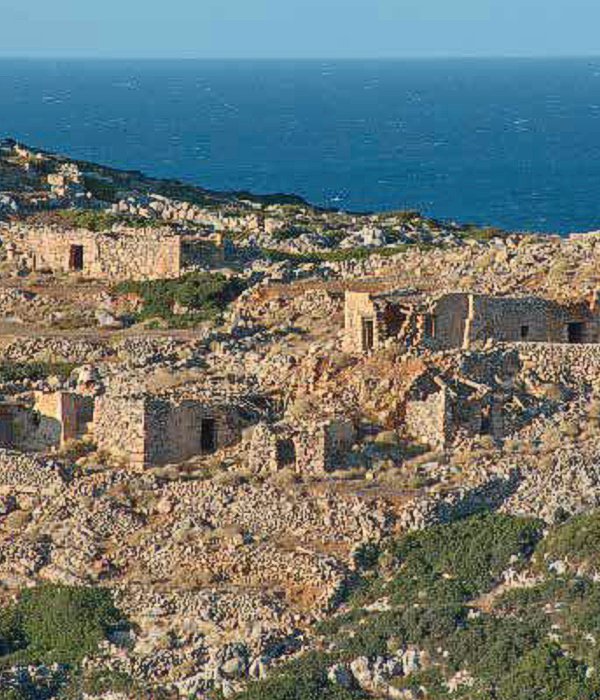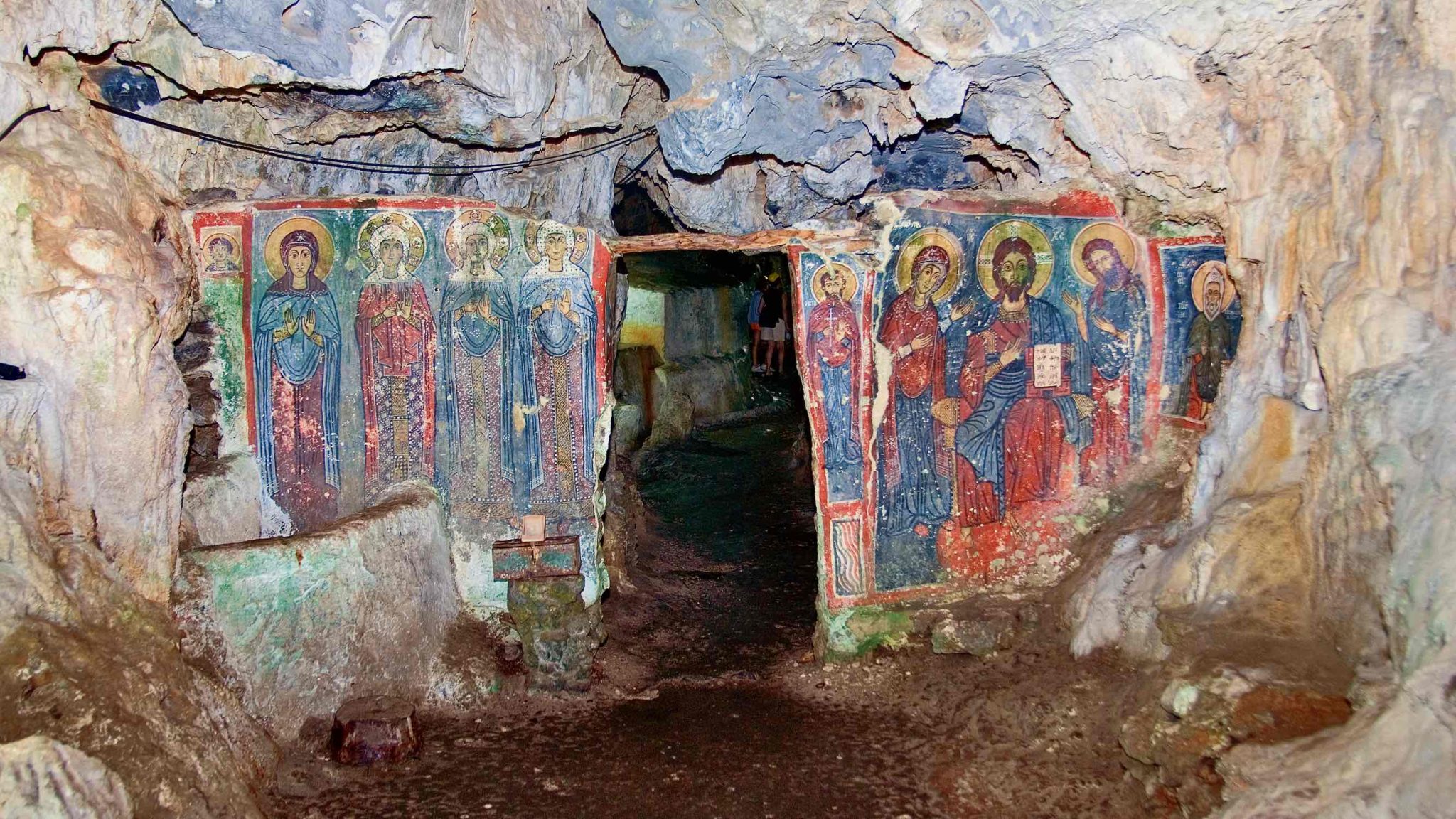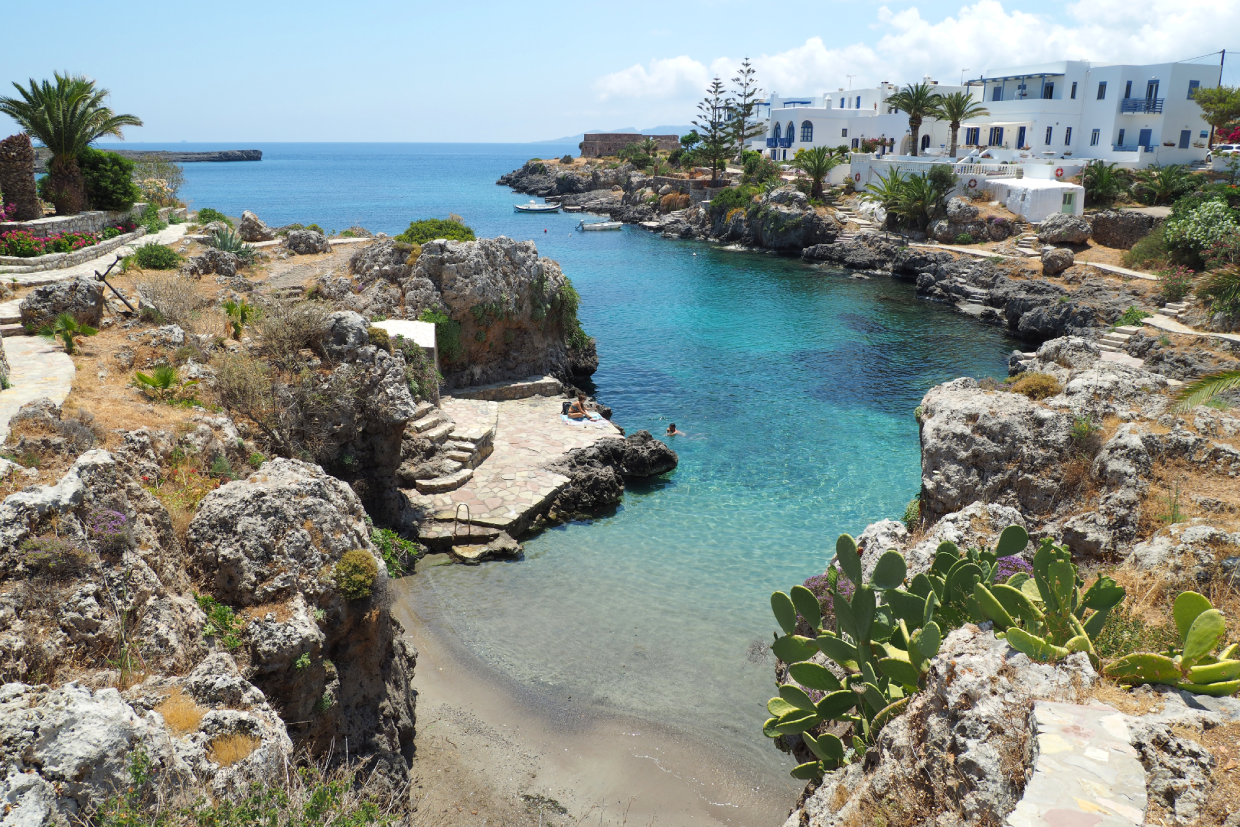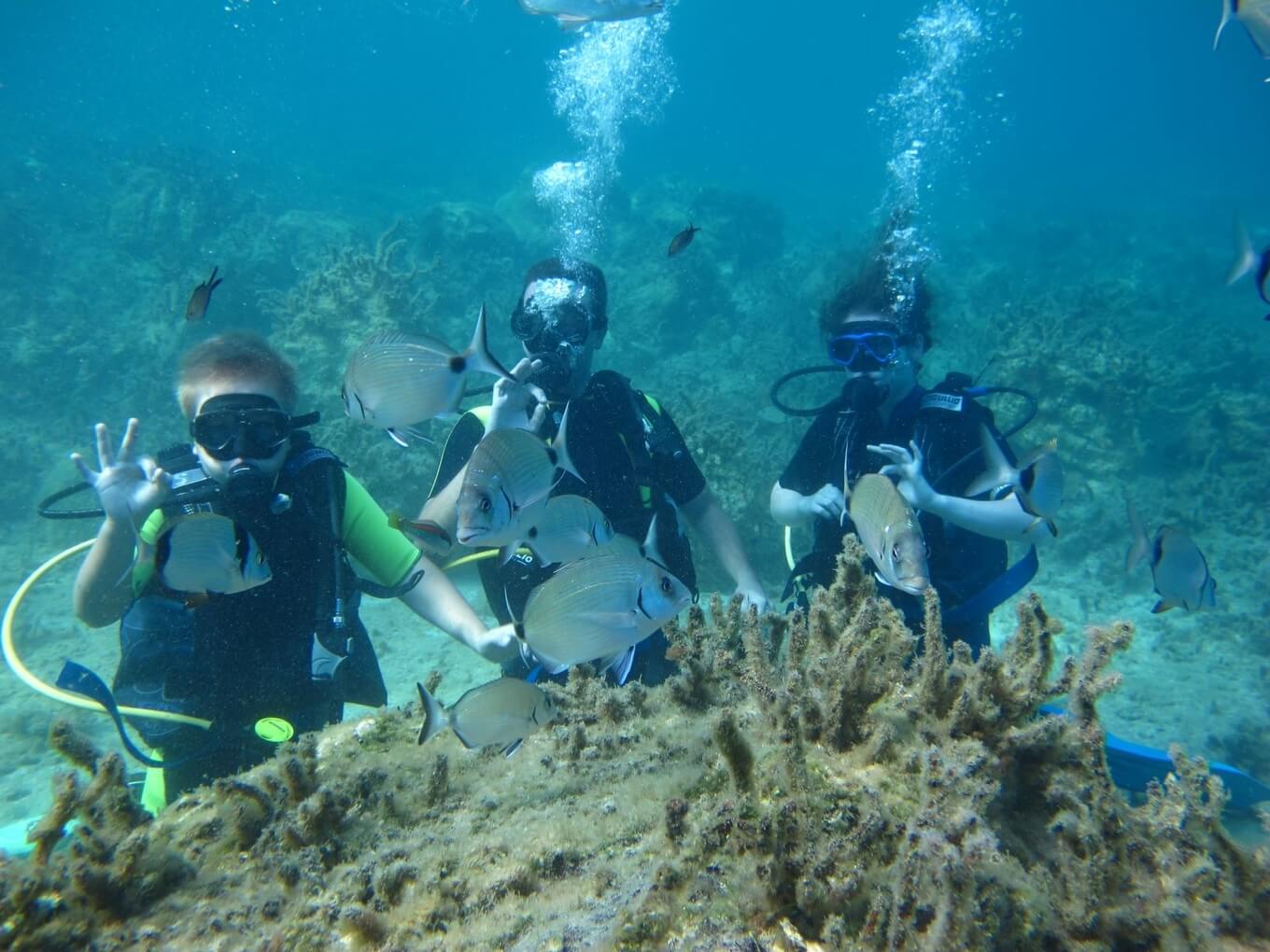The Antikythera Castle “Kastro”
The Antikythera Castle “Kastro”
The visible antiquities on the island of Antikythera today are the Hellenistic fortified city in the old settlement “Kastro”, above the bay of Xiropotamos, and the tombs, and some other productive facilities of late antiquity in the settlements of Potamos, Charchaliana and Bantoudiana.
On the eastern bank of the Xiropotamos stream, two paths lead to the fortified settlement of “Kastro”. The western path, very close to the beach, which has undergone serious deterioration over time, was narrow and did not allow vehicles to pass. In many places, the retention wall can still be seen, as well as steps carved or shaped with stones. About ten meters south of the gate that leads to the city, on the rock on which the path is shaped, a “rocky” sanctuary with two alcoves and a bench is preserved. It is a sanctuary, outside the gate that led only to the right (east) bank of the harbor, reserved for those who were leaving or returning from a sea voyage. The gate of the fort at the end of the path, the “Southwest Gate”, had a relatively elaborate and decorated appearance, judging from some architectural parts found on the site.
The ancient city was built on the western slope of the “Kastro” peninsula. In the southern part of the wall that faced the hinterland of the island and was accessible from the interior of the island, a second gate, the “South gate”, was opened, to which a more passable path east of the harbor led.
The wall covered the entire western slope of the peninsula, from the rocky beach to the west and north to the ridge to the east. At the highest point, a second line of fortification bounded the administrative center of the city, the “Acropolis”. The Acropolis also housed the residence of the city’s “leader”, protected by the strong rock that rose to its east, while the gate of the “Acropolis” to the city was also monumental, but it seems that from the beginning of its operation it had been destroyed by an external attack and its restoration was done with a different design.
The city’s fortification wall is visible almost along its entire length and was constructed in different ways, depending on the local material. In the sections where the soft limestone was accessible, the wall consisted of carefully cut stone blocks, placed isometrically. In the sections where the material was hard and difficult to process limestone, the irregular polygonal construction that was used in many fortifications of Crete during the Hellenistic period was preferred. It seems that the original builders paid attention to the appearance and stability only to the exterior side of the fortress, while on the inside, the wall that separated the Acropolis from the city, was initially built with irregular polygonal structure, while later (unknown when, but not long after its original construction) was covered with a pseudo-isodomic row of stones. Rectangular fortification towers protrude from the wall along its entire length.
In the northern part of the fort, a considerable part was left without houses or other structures, as happens in places that are often attacked, and “house” either the inhabitants who take refuge there for protection or an army that comes to reinforce the defense.
Two other monuments that are preserved almost intact inside the city are a “neosoikos” (shipyard) and an underground sanctuary – the “Prison” as it is called by the current residents.
The shipyard (neosoikos) is approximately 30 m long and is visible today in its entire length due to the elevation of the island mentioned above. The parts that were carved under the surface of the sea are also visible today. The usable length of the “neosoikos“, (i.e. the part that would house the ship on land), is 18 m. The rock preserves the groove in which the strong sea gate is considered to have been placed. The rock received great pressure due to the northern winds, which were characterized by a particularly high intensity and hit the island especially during winter.
The so-called “Prison” is located a relatively short distance from the neosoikos, in the middle of the large tufa quarry. It is an underground rectangular space with a north-south orientation axis and two small side chambers. One to the east, opposite the entrance, and the other to the south. On the west side, south of the entrance, there is a built bench and in front of it a “well for offerings“ (prosfora) has been dug. Above the well, a “skylight” has been carved into the overlying rock, from which offerings were probably offered to the deity. The name of the worshiped chthonic deity has not survived.
The entire fortified area, except for the northern part mentioned above, was covered with houses. The construction of cultivation ramparts by the younger inhabitants has covered the ancient structures, but in many places remains of the houses, walls and parts of floors can be seen. In the western part of the city, which is flat and rocky, foundations of houses are preserved, many of which were built in direct contact with the western part of the wall.
From the movable findings it appears that the duration of use of the fortified town is limited to the Hellenistic period and more specifically it dates from the end of the 4th century BC to the first half of the 1st century BC. In the “Kastro”, apart from a small fragment of a Minoan stone vessel and some obsidian and local flint blades and spikes, no movable find is dated to periods before the end of the 4th century BC, while there are no findings later than the second quarter of the 1st century BC. It is therefore a “closed” set that is chronologically limited to the Hellenistic period, which poses problems of historical interpretation given the monumentality of the construction and the strategic location of the island.
A historical discussion is brought about the reasons and objectives that led to the construction of such an ambitious and impressive fortress on this island. As the Greek archaeologist Valerios Stais wrote in his notes, “in this small and unknown island, that is barely mentioned by ancient authors, it seems quite a paradox to me” (εἰς νησίδριον ἄσημον καὶ ὑπὸ τῶν ἀρχαίων συγγραφέων μόλις μνείας τυχόν, φαίνεται μοι λίαν παράδοξος). However, it should be noted that among the movable findings are war objects, arrowheads and crossbow projectiles, lead, as well as catapult projectiles of various sizes, finds that show a society in constant war activity. It should also be noted that, based on the coins that have been found, as well as some other ceramic finds, the island, for most of its “life”, was part of the Cretan city of Falasarna.





